 Facebook
Facebook
 X
X
 Instagram
Instagram
 TikTok
TikTok
 Youtube
Youtube
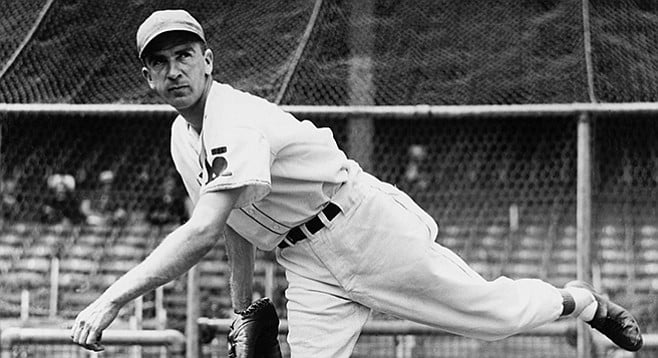
In the spring of 1970, former baseball Hall of Fame pitcher Carl Hubbell came to Patrick Henry High School for a baseball game between the home team and Saint Augustine’s High. As a representative from the Old New York Giants to only the second All Star Game in 1934, he opened the contest by striking out five of the first six American League batters, including Babe Ruth, Lou Gehrig, and Jimmy Foxx.
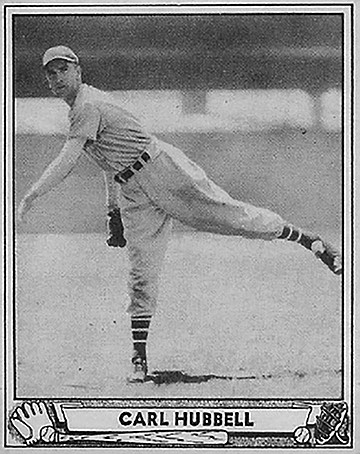
“The Carl Hubbell?” asked the Saints coach Bill Whitaker upon meeting him before the game in San Diego. Whitaker had a pitcher on his squad he was proud of, too. Many times the coach, now 87, has told the story of how the veteran players on his team of that era used to beg him not to have John D’Acquisto pitch batting practice. And that started even when the boy was still in the ninth grade. He threw with extreme velocity, and he was wild.
On the day Carl Hubbell showed up in San Diego, he was scouting for the San Francisco Giants. He may have decided to advise the Giants to draft D’Acquisto even before D’Acquisto threw a no-hitter that day.
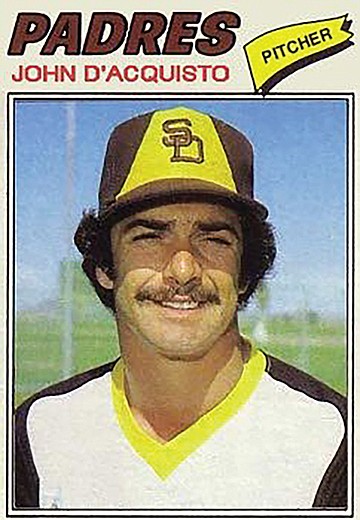
In Fastball John, a 524-page Major League Baseball tell-all co-authored by writer and filmmaker Dave Jordan, D’Acquisto explains. “I noticed this older gentleman standing behind the backstop…. This was the last man in America who wore a fedora. Something told me I really wanted to impress this guy. I motioned to my catcher that serious heat was coming. I threw the warm-up as fast as anything I ever tossed before.”
According to D’Acquisto, the pitch flew over the catcher’s head and lodged in the backstop’s chain-link fence. He heard the umpire exclaim that it must have traveled over 100 miles per hour. After the scuffed ball was pried out of the fence, Hubbell said he wanted to take it home. He asked the pitcher to autograph it when the game was over. “I need something to show ’em back in San Francisco,” he said.
Fastball John takes readers through D’Acquisto’s career playing for six major league teams, starting with San Francisco in 1973. The following year he won the National League Rookie Pitcher of the Year award.
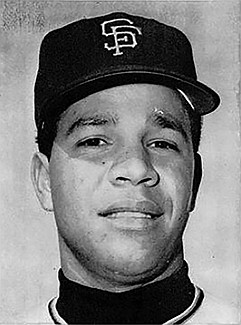
D’Acquisto was always ready to jump at new chances to shine, even ones that took him beyond playing the game. Did that originate in confidence in his fastball? He tells the story of sitting around on the grass during his first spring training and listening to Marvin Miller, head of the players’ union. Also attending were Willie Mays, Willie McCovey, and Juan Marichal. Already at this time, Miller was urging them to consider voting for a work stoppage.
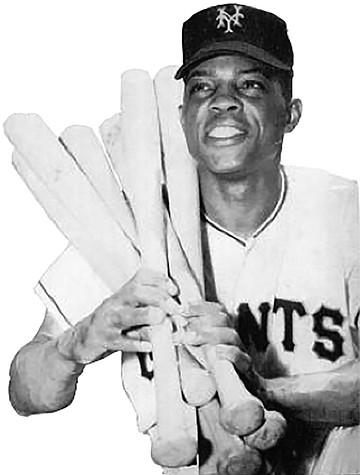
It was the “first time,” writes D’Acquisto, “I had ever seen my idols, my heroes looking up at another man listening obediently.” None of them were commenting on Miller’s pitch. But the rookie raised his hand to ask how a work stoppage would affect “our families and insurance later on.”

“‘How old are you, John?’ were the first words Marvin Miller ever said to me. I was in shock.” But for the rest of his career D’Acquisto, who was then 20, would be a staunch Miller and union supporter.
He did not make the team and was sent to the minor leagues. In September, however, when the Giants brought him up, he began a working relationship with Bank of America. It started when the bank, in response to high fan expectations of the flame-throwing phenom, asked him and several other athletes to help promote its new Visa card. He would work with the bank, mostly in off-seasons, until 1980, gradually becoming an accounts manager. The second career propelled him into the world of high finance after his playing days were over.
Despite D’Acquisto’s simultaneous commitment to the players’ union, he would retain an independent mind. Fast-forward to 1979, the third year in his four-year stint with the San Diego Padres. “One night in late September after a game,” he writes, “I found myself in Mr. [Ray] Kroc’s office, talking over cocktails.
“‘Johnny,’ Kroc asked me, ‘what are we going to do about Winfield?’ Big Dave was having a tremendous year at the plate, amassing 34 home runs, 118 runs batted in, and a .308 batting average.
“‘Boss, I just want your McDonald’s location on Via de la Valle. Please don’t get me involved.’
“‘Johnny, I’m asking your opinion.’
“Well, if my boss is asking my opinion, two million dollars a year is a lot of money.”
In a subsequent conversation with Winfield, D’Acquisto learned that the superstar was seeking a $20 million contract. “After the season ended, I ran into a writer from UPI. He asked me about Winfield in what seemed like an off-the-record conversation.”
The reporter quoted D’Acquisto’s words in print: “If Winny gets that kind of money, it’s going to hurt all the other guys on our team and that’s bound to cause dissension.”
“I actually said that,” D’Acquisto writes. “Marvin [Miller] never called me out on it. Neither did my agent, Jerry Kapstein, the most powerful agent in baseball at the time. Not even sure Winny saw it. If he had, I’m sure I would have said something…. I don’t know why I said it. I wasn’t envious — I made pretty good money….”
Over the off-season, George Steinbrenner, owner of the Yankees, signed Winfield to a ten-year, $23 million contract.
And San Diego, the previous August, traded D’Acquisto to the Montreal Expos. So he last pitched for the Padres four years before manager Dick Williams led the team to the 1984 World Series. But the two came face-to-face, and not always comfortably, during the last two months of the 1980 season. That year Williams was Montreal’s manager and D’Acquisto went from being primarily a starting pitcher to a reliever. The team was in contention to win the National League Eastern Division title until the last day of the season.
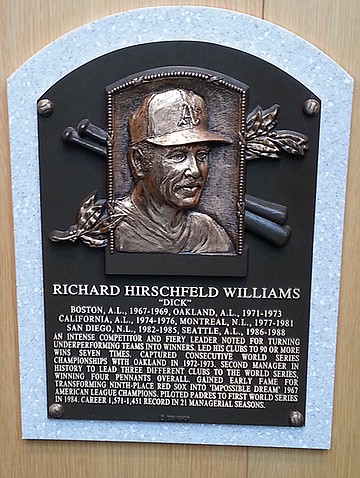
As the story unfolds in Fastball John, Williams had a habit of berating his relievers when they lost a lead. He took his first potshot at D’Acquisto after he “blew a potential save” late in the season. A full-scale tirade came eight days later on the charter flight home from San Francisco. Again, D’Acquisto had not been able to hold a lead and became the game’s losing pitcher. He and catcher Gary Carter were sitting in the plane’s midsection when a grumbling Williams approached “after his fifth bourbon” of the night. Letting loose a string of angry obscenities, he told his pitcher, “You need to grow some balls.”
“I stood up in a flash and took a swing,” writes D’Acquisto. “Only my arm didn’t go anywhere. I turned and Kid Carter had a hold of my arm,” D’Acquisto begged to be left to the fight. “You hit him, your career’s over,” said Carter, quickly defusing the conflict.
It turned out that D’Acquisto’s career was almost over anyway. He was granted free-agent status in December 1980 and signed with the California Angels. In 1982, the Angels traded him to the Atlanta Braves, who traded him to Oakland later the same year. It was his last year in Major League baseball.
D’Acquisto’s account of his baseball life covers his minor-league adventures and the many colorful characters he met in baseball. The memorable games in all the cities where he played, especially San Francisco and San Diego, add drama to the story. But the story gets shaky at points when he covers his post-baseball business career. In the early 1990s, he started his own company, the D’Acquisto Financial Group.
From the home where D’Acquisto grew up on the eastern edge of Juniper Dip in North Park to the height of his business career, he experienced substantial upward mobility. During his years as a Padres player, he lived in the north part of La Jolla close to University Towne Centre. After establishing the financial group, he moved to Rancho Santa Fe, on the edge of Del Mar.
By 1995, the Securities and Exchange Commission was breathing down D’Acquisto’s neck. The agency’s investigation began after his company made an offer to buy the Padres for $350 million. Where was the money coming from?
Late in 1995, he was arrested and indicted on charges of securities fraud. Thumbnail accounts of his case appeared in the Associated Press and the New York Times. The final pages of Fastball John do make a plausible case for his innocence. But too much is left out that might help the reader square what the news sources reported and his claim to have been ignorant of how others caused his undoing.
In 1996, in a New York trial, he was convicted on 39 violations. The most serious resulted from two investors illegally depositing money from a European bank into D’Acquisto’s local Chase account to pay for an interest in the Padres. Trading securities between American and foreign banks is highly regulated by law. D’Acquisto maintains that he had asked the investors to wait until he thoroughly examined the deal before acting. But they didn’t wait.
In 1999, the Los Angeles Times reported that after D’Acquisto already had served three years in a Boron, California, federal prison, San Diego prosecutor William Hayes charged him again with securities fraud. Hayes said all the charges were new. But D’Acquisto saw it as double jeopardy. He felt his local baseball fame was being used against him. In a meeting to discuss a plea bargain, 38 of the 39 charges were dropped, according to D’Acquisto. He writes that he told Hayes, “This was all about you making points on my back to build your résumé and you know it.”
D’Acquisto got out of prison in 2001. He was released from probation in 2003, the same year that the Bush administration made William Hayes the federal judge he is today.


In the spring of 1970, former baseball Hall of Fame pitcher Carl Hubbell came to Patrick Henry High School for a baseball game between the home team and Saint Augustine’s High. As a representative from the Old New York Giants to only the second All Star Game in 1934, he opened the contest by striking out five of the first six American League batters, including Babe Ruth, Lou Gehrig, and Jimmy Foxx.

“The Carl Hubbell?” asked the Saints coach Bill Whitaker upon meeting him before the game in San Diego. Whitaker had a pitcher on his squad he was proud of, too. Many times the coach, now 87, has told the story of how the veteran players on his team of that era used to beg him not to have John D’Acquisto pitch batting practice. And that started even when the boy was still in the ninth grade. He threw with extreme velocity, and he was wild.
On the day Carl Hubbell showed up in San Diego, he was scouting for the San Francisco Giants. He may have decided to advise the Giants to draft D’Acquisto even before D’Acquisto threw a no-hitter that day.

In Fastball John, a 524-page Major League Baseball tell-all co-authored by writer and filmmaker Dave Jordan, D’Acquisto explains. “I noticed this older gentleman standing behind the backstop…. This was the last man in America who wore a fedora. Something told me I really wanted to impress this guy. I motioned to my catcher that serious heat was coming. I threw the warm-up as fast as anything I ever tossed before.”
According to D’Acquisto, the pitch flew over the catcher’s head and lodged in the backstop’s chain-link fence. He heard the umpire exclaim that it must have traveled over 100 miles per hour. After the scuffed ball was pried out of the fence, Hubbell said he wanted to take it home. He asked the pitcher to autograph it when the game was over. “I need something to show ’em back in San Francisco,” he said.
Fastball John takes readers through D’Acquisto’s career playing for six major league teams, starting with San Francisco in 1973. The following year he won the National League Rookie Pitcher of the Year award.

D’Acquisto was always ready to jump at new chances to shine, even ones that took him beyond playing the game. Did that originate in confidence in his fastball? He tells the story of sitting around on the grass during his first spring training and listening to Marvin Miller, head of the players’ union. Also attending were Willie Mays, Willie McCovey, and Juan Marichal. Already at this time, Miller was urging them to consider voting for a work stoppage.

It was the “first time,” writes D’Acquisto, “I had ever seen my idols, my heroes looking up at another man listening obediently.” None of them were commenting on Miller’s pitch. But the rookie raised his hand to ask how a work stoppage would affect “our families and insurance later on.”

“‘How old are you, John?’ were the first words Marvin Miller ever said to me. I was in shock.” But for the rest of his career D’Acquisto, who was then 20, would be a staunch Miller and union supporter.
He did not make the team and was sent to the minor leagues. In September, however, when the Giants brought him up, he began a working relationship with Bank of America. It started when the bank, in response to high fan expectations of the flame-throwing phenom, asked him and several other athletes to help promote its new Visa card. He would work with the bank, mostly in off-seasons, until 1980, gradually becoming an accounts manager. The second career propelled him into the world of high finance after his playing days were over.
Despite D’Acquisto’s simultaneous commitment to the players’ union, he would retain an independent mind. Fast-forward to 1979, the third year in his four-year stint with the San Diego Padres. “One night in late September after a game,” he writes, “I found myself in Mr. [Ray] Kroc’s office, talking over cocktails.
“‘Johnny,’ Kroc asked me, ‘what are we going to do about Winfield?’ Big Dave was having a tremendous year at the plate, amassing 34 home runs, 118 runs batted in, and a .308 batting average.
“‘Boss, I just want your McDonald’s location on Via de la Valle. Please don’t get me involved.’
“‘Johnny, I’m asking your opinion.’
“Well, if my boss is asking my opinion, two million dollars a year is a lot of money.”
In a subsequent conversation with Winfield, D’Acquisto learned that the superstar was seeking a $20 million contract. “After the season ended, I ran into a writer from UPI. He asked me about Winfield in what seemed like an off-the-record conversation.”
The reporter quoted D’Acquisto’s words in print: “If Winny gets that kind of money, it’s going to hurt all the other guys on our team and that’s bound to cause dissension.”
“I actually said that,” D’Acquisto writes. “Marvin [Miller] never called me out on it. Neither did my agent, Jerry Kapstein, the most powerful agent in baseball at the time. Not even sure Winny saw it. If he had, I’m sure I would have said something…. I don’t know why I said it. I wasn’t envious — I made pretty good money….”
Over the off-season, George Steinbrenner, owner of the Yankees, signed Winfield to a ten-year, $23 million contract.
And San Diego, the previous August, traded D’Acquisto to the Montreal Expos. So he last pitched for the Padres four years before manager Dick Williams led the team to the 1984 World Series. But the two came face-to-face, and not always comfortably, during the last two months of the 1980 season. That year Williams was Montreal’s manager and D’Acquisto went from being primarily a starting pitcher to a reliever. The team was in contention to win the National League Eastern Division title until the last day of the season.

As the story unfolds in Fastball John, Williams had a habit of berating his relievers when they lost a lead. He took his first potshot at D’Acquisto after he “blew a potential save” late in the season. A full-scale tirade came eight days later on the charter flight home from San Francisco. Again, D’Acquisto had not been able to hold a lead and became the game’s losing pitcher. He and catcher Gary Carter were sitting in the plane’s midsection when a grumbling Williams approached “after his fifth bourbon” of the night. Letting loose a string of angry obscenities, he told his pitcher, “You need to grow some balls.”
“I stood up in a flash and took a swing,” writes D’Acquisto. “Only my arm didn’t go anywhere. I turned and Kid Carter had a hold of my arm,” D’Acquisto begged to be left to the fight. “You hit him, your career’s over,” said Carter, quickly defusing the conflict.
It turned out that D’Acquisto’s career was almost over anyway. He was granted free-agent status in December 1980 and signed with the California Angels. In 1982, the Angels traded him to the Atlanta Braves, who traded him to Oakland later the same year. It was his last year in Major League baseball.
D’Acquisto’s account of his baseball life covers his minor-league adventures and the many colorful characters he met in baseball. The memorable games in all the cities where he played, especially San Francisco and San Diego, add drama to the story. But the story gets shaky at points when he covers his post-baseball business career. In the early 1990s, he started his own company, the D’Acquisto Financial Group.
From the home where D’Acquisto grew up on the eastern edge of Juniper Dip in North Park to the height of his business career, he experienced substantial upward mobility. During his years as a Padres player, he lived in the north part of La Jolla close to University Towne Centre. After establishing the financial group, he moved to Rancho Santa Fe, on the edge of Del Mar.
By 1995, the Securities and Exchange Commission was breathing down D’Acquisto’s neck. The agency’s investigation began after his company made an offer to buy the Padres for $350 million. Where was the money coming from?
Late in 1995, he was arrested and indicted on charges of securities fraud. Thumbnail accounts of his case appeared in the Associated Press and the New York Times. The final pages of Fastball John do make a plausible case for his innocence. But too much is left out that might help the reader square what the news sources reported and his claim to have been ignorant of how others caused his undoing.
In 1996, in a New York trial, he was convicted on 39 violations. The most serious resulted from two investors illegally depositing money from a European bank into D’Acquisto’s local Chase account to pay for an interest in the Padres. Trading securities between American and foreign banks is highly regulated by law. D’Acquisto maintains that he had asked the investors to wait until he thoroughly examined the deal before acting. But they didn’t wait.
In 1999, the Los Angeles Times reported that after D’Acquisto already had served three years in a Boron, California, federal prison, San Diego prosecutor William Hayes charged him again with securities fraud. Hayes said all the charges were new. But D’Acquisto saw it as double jeopardy. He felt his local baseball fame was being used against him. In a meeting to discuss a plea bargain, 38 of the 39 charges were dropped, according to D’Acquisto. He writes that he told Hayes, “This was all about you making points on my back to build your résumé and you know it.”
D’Acquisto got out of prison in 2001. He was released from probation in 2003, the same year that the Bush administration made William Hayes the federal judge he is today.
Comments